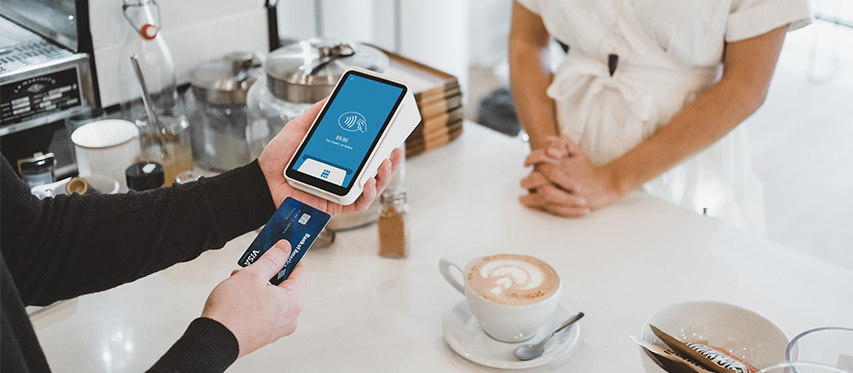7 Technology Tips for Today’s Digitally Dependent Restaurant Environment

As technology continues to advance, it has become increasingly important for restaurant establishments to integrate it into their operations to meet the needs of their customers. We recently conducted a poll on our LinkedIn page to discover which tech feature our followers thought was most demanded by customers at a restaurant. Not surprisingly, Wi-Fi was the clear winner with more than half the votes. Providing free Guest Wi-Fi is only half of the equation -- every interaction is dependent on the quality, capability, performance, and availability of your restaurant’s network connectivity and Wi-Fi.
Gone are the days where your restaurant could succeed despite a weak internet connection. These days, customers expect to be able to quickly access menus via QR codes, order and pay on mobile devices, and seamlessly alert staff when they arrive for curbside pickup. Here are seven tips for addressing network technology so your restaurant can experience greater success in today’s digital environment.
- Anticipate situations of inadequate internet connectivity. Your restaurant’s broadband internet access is dynamic. Some days you may have 10s and even 100s of Mbps of network access. Other days you may have far less. You need to plan for periods of network congestion, high packet loss, and high latency. SD-WAN solutions vary widely in their use of optimization techniques such as Forward Error Correction (FEC), multi-path replication, and application steering. Choose your SD-WAN solution carefully. The choice will be the difference between exceeding customers' expectations and failing.
- Increase network availability. If a restaurant’s internet fails, there is no way to receive or fulfill online orders. While most can handle offline credit card transactions, that’s not possible with mobile, curbside, or third-party delivery orders. Without connectivity, customers won't be able to redeem their loyalty rewards. Don’t leave yourself at the mercy of the internet. Augment your restaurant’s primary broadband internet connection with a second circuit, like a cellular connection. Ideally, run it in active/active configuration so that both circuits may be used as needed (and utilizing the cellular connection in backup mode may even be sufficient). In any case, minimize your operational cost by only using the metered LTE connection when necessary.
- Survey the restaurant’s Wi-Fi coverage for gaps and interference. Achieving adequate Wi-Fi coverage in a restaurant can be far more complicated than Wi-Fi in your home. Active kitchen machinery may significantly obstruct Wi-Fi signals. Even your neighbor’s Wi-Fi usage (e.g. IP Security Cameras) may hamper your Wi-Fi network. Seek out enterprise-grade Wi-Fi solutions that can dynamically detect Wi-Fi interference and change channels. In some cases, you may need to manually tune your Access Point (AP) to avoid common channel conflicts. Keep in mind, while 5 Ghz Wi-Fi provides higher speeds, 2.4 Ghz provides greater coverage. And some connectivity is always better than no connectivity.
- Consider outdoor Wi-Fi access points for curbside. Many establishments will be able to get away with an indoor Wi-Fi AP located near the main entry to cover an entire parking lot, yet others will need to upgrade to a directional outdoor Wi-Fi AP. While such devices are more expensive, you must consider the lost opportunity cost that happens when a customer is unable to download your app or redeem their loyalty points.
- Employ an adequate monitoring and management strategy. While successful implementation of restaurant Wi-Fi may be challenging, maintaining the operational viability of Wi-Fi at scale and across sites is also quite complex. Ensure adequate internal resources are equipped with the proper dashboards and monitoring tools to manage the solution.
- Invest in cybersecurity. Wi-Fi dramatically increases the level of convenience and engagement offered to customers, but it also exposes them (and you!) to malicious attacks. The worst outcome is for your customers to experience the exhausting, mind-numbing process of recovering from a stolen identity. Far too many restaurants fail to meet or comply with even the most basic Payment Card Industry (PCI) Digital Security Standards. In the event of a data breach, such restaurants will be held liable for all costs associated with the data loss. So be sure to protect both your business and your customers.
- Consider leveraging a Managed Network Services provider. With the entire restaurant and branded experience fully dependent on the internet and Wi-Fi, managing the infrastructure at scale is an onerous task. To reduce costs and increase service coverage, consider offloading this operational requirement to a qualified Managed Network Services provider.
In this new era, your customers' (and employees'!) experiences are completely digitally dependent. And reliable connectivity and Wi-Fi are crucial to making this digital relationship work. Don’t overlook these tips as key ingredients in the recipe for a more successful and high-performing digital restaurant environment.